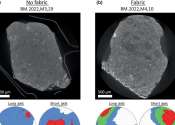Seeing is believing: Scientists reveal connectome of the fruit fly visual system
Janelia scientists and collaborators have reached another milestone in connectomics, unveiling a comprehensive wiring diagram of the fruit fly visual system. The work has been released on the pre-print server bioRxiv.









